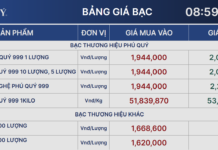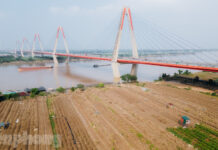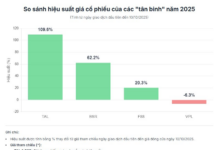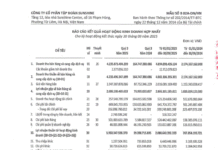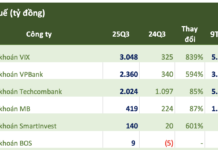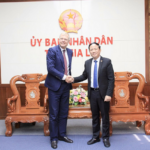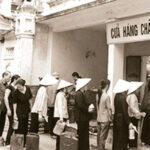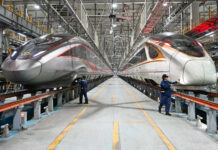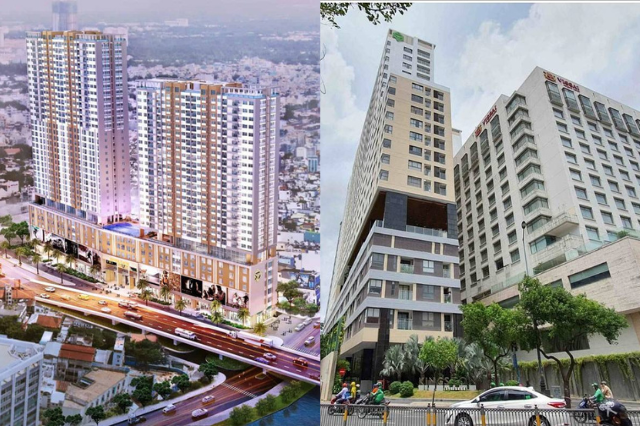From a “Ghost City” to an Urban Renaissance: The Transformation of Nhơn Trạch
Once predominantly agricultural and sparsely populated, Nhơn Trạch has undergone a remarkable transformation in recent years. Located near Ho Chi Minh City and with access to the sea, Nhơn Trạch is evolving into an airport city with significant investments in transportation infrastructure.
In 1996, the master plan for the new Nhơn Trạch urban area was approved, encompassing thousands of hectares of land. The vision was to develop it into a type-II city of Đồng Nai province, with an expected population of 500,000 people by 2020 across an area of 8,000 hectares, including industrial, residential, and urban zones.
In 2006, the Prime Minister approved adjustments to the plan, designating Nhơn Trạch as a key center for industry, trade, services, tourism, education, and science and technology in Đồng Nai province.
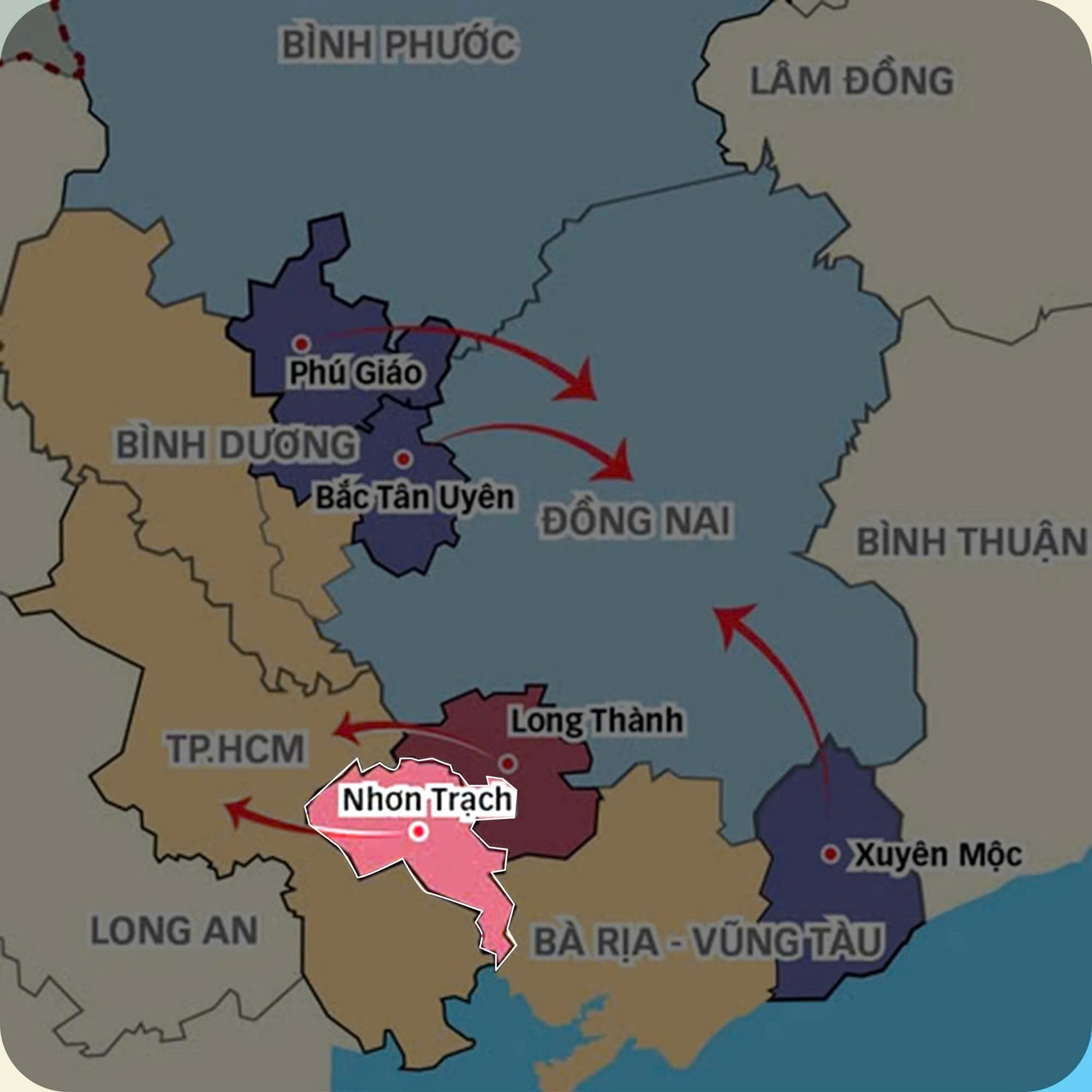
Nhơn Trạch’s strategic location near Ho Chi Minh City and other key areas lacked adequate infrastructure investment in the past.
At the beginning of 2023, the Standing Committee of the Đồng Nai Provincial Party Committee issued a resolution on the development of Nhơn Trạch until 2030, with a vision towards 2040. The resolution aims for Nhơn Trạch to achieve the basic criteria of a type-II city by 2030. In subsequent years, investments will continue to upgrade the city to meet type-I city standards. According to the resolution, by 2025, Nhơn Trạch is expected to meet the criteria of a type-II city.
Nhơn Trạch was once labeled a “ghost city” due to the lack of inhabitants in its urban areas despite years of development. The area experienced land speculation, with prices surging and then plummeting due to the absence of real demand. The primary reason for this was the lack of infrastructure connecting Nhơn Trạch to Ho Chi Minh City and other regions.
Today, the label of a “ghost city” is fading, and many urban areas have thriving communities. However, some projects and areas still struggle to attract residents. On the other hand, real estate businesses that have been present in the region since its early days are now reaping the benefits of the area’s infrastructure development.
Infrastructure Breakthroughs Transforming the Urban Landscape
The most significant challenge for the Nhơn Trạch market has been the lack of inter-regional transportation infrastructure. Insufficient investment in infrastructure hindered the socio-economic development and the real estate market from reaching their full potential.
Recently, however, a series of large-scale infrastructure projects nearing completion or currently under development have transformed the landscape of Nhơn Trạch, Đồng Nai.
In addition to the Long Thành Airport – a symbolic architectural project of Vietnam that is approaching its final stages and is expected to receive its first commercial flight in mid-2026 – numerous transportation infrastructure projects are simultaneously taking shape in Đồng Nai.
One notable project is the Nhơn Trạch Bridge (part of Project 1A of Ho Chi Minh City’s Ring Road 3), which opened to traffic on August 19, 2025. The 8.22-kilometer-long bridge connects Ho Chi Minh City and Đồng Nai. The starting point of the bridge is on Provincial Road 25B (Đồng Nai), and it connects to the Ho Chi Minh City-Long Thành-Dầu Giây Expressway. Of the total length, 6.3 kilometers are in Đồng Nai, and the remaining 1.92 kilometers are in Ho Chi Minh City.
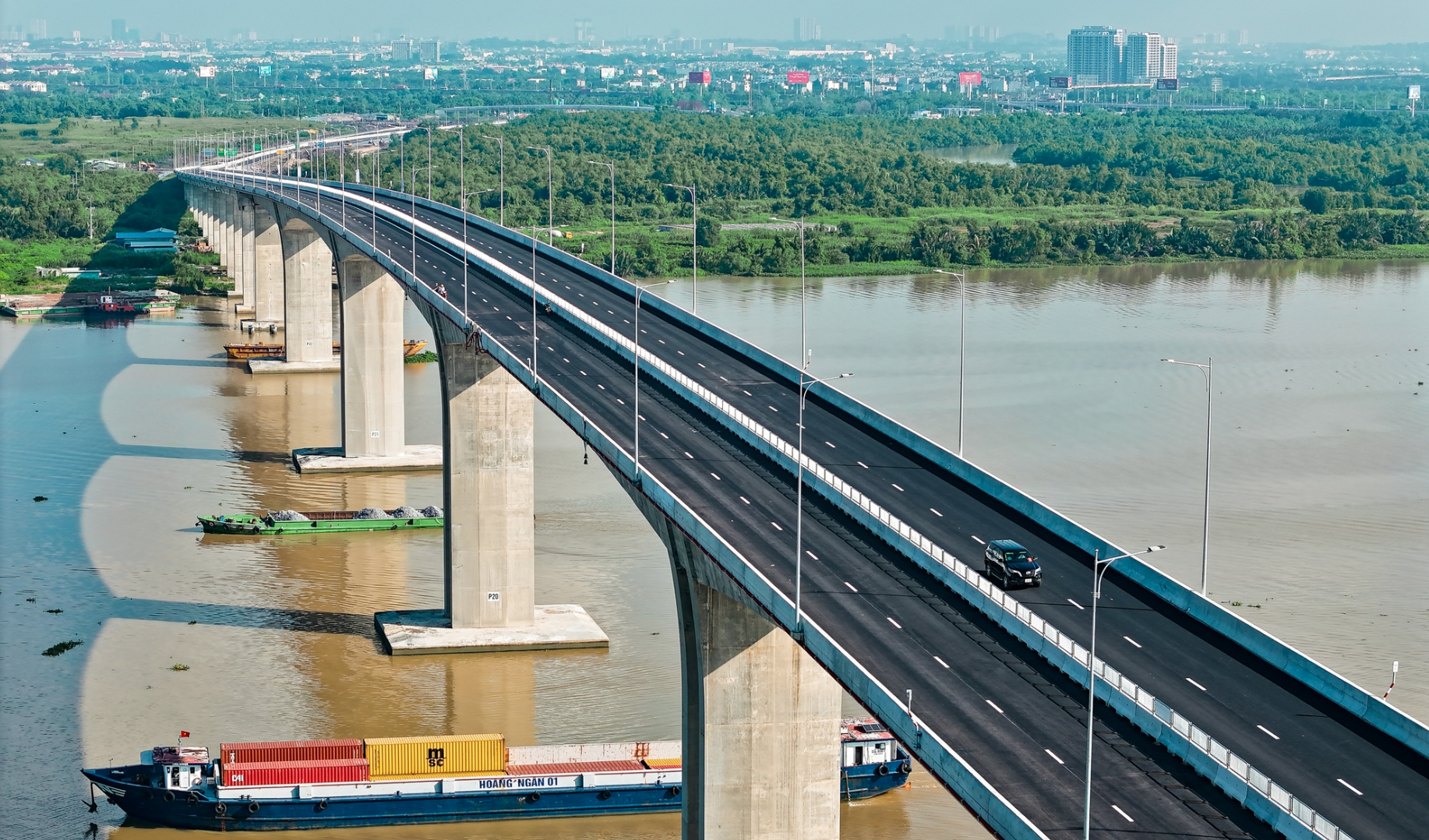
The Nhơn Trạch Bridge, connecting Đồng Nai and Ho Chi Minh City, opened to traffic on August 19, 2025.
The Nhơn Trạch Bridge not only connects Ho Chi Minh City and Đồng Nai but also serves as a crucial link in the Southeast region’s transportation network. It enhances connectivity to the Long Thành International Airport, boosting socio-economic development in the entire southern key economic region. This development is expected to stimulate the real estate market in the Nhơn Trạch area, especially for projects located near the bridge and connecting roads.
Additionally, on September 18, 2025, Ho Chi Minh City plans to open to traffic the Ring Road 3 section from the intersection of the Ho Chi Minh City-Long Thành-Dầu Giây Expressway to the Nhơn Trạch Bridge. By December 31, 2025, a 14.7-kilometer-long elevated road section from Long Thành to Tân Vạn is expected to be completed and put into use. By June 30, 2026, the entire 47-kilometer section passing through Ho Chi Minh City is expected to be completed and opened to traffic.
The Ring Road 3, spanning over 76 kilometers, plays a strategic role in connecting Ho Chi Minh City with neighboring provinces such as Đồng Nai, Bình Dương, and Tây Ninh. Its early completion will have significant implications for transportation and will boost economic development, facilitate trade, attract investment, and foster the formation of new urban areas. As a result, real estate prices in areas along the Ring Road 3 are expected to increase significantly due to the improved connectivity.
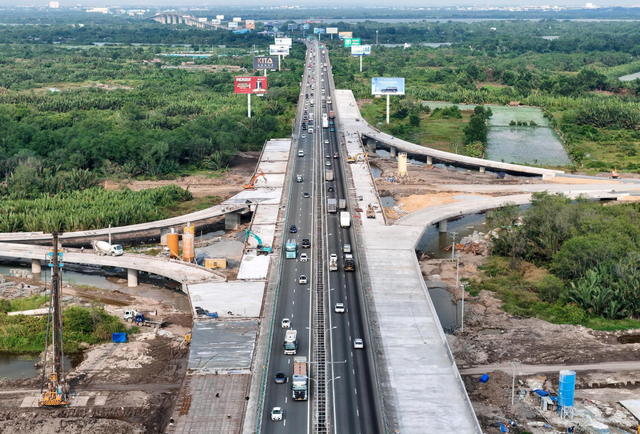
Ho Chi Minh City’s Ring Road 3 is accelerating towards completion.
Another critical infrastructure project that will shape the economic, social, and real estate landscape in Đồng Nai is the expansion of the Ho Chi Minh City-Long Thành Expressway from four to eight to ten lanes. VEC has instructed consultants to immediately commence surveys and design drawings and establish a special mechanism for the project. The project is expected to be approved on July 24, with the selection of the construction contractor on August 13 and the groundbreaking on August 19. The project is expected to be substantially completed by 2026.
This expressway is a vital transportation artery connecting Ho Chi Minh City with southern provinces. The expansion will facilitate trade and the transportation of goods, boosting the economic development of the region, particularly in Đồng Nai and the former Bà Rịa-Vũng Tàu province. The expanded expressway will cater to the increasing demand for cargo and passenger transportation, especially with the upcoming operation of significant transportation hubs like the Long Thành Airport.
To enhance connectivity to the airport, in addition to the Thủ Thiêm-Long Thành railway, an extension of the Bến Thành-Suối Tiên metro line to Đồng Nai is under consideration. Recently, Ho Chi Minh City proposed a rapid metro line connecting Tân Sơn Nhất and Long Thành airports, reducing travel time between the two airports to 30-40 minutes.
If implemented promptly and synchronously, the rapid metro line connecting the two airports will not only help alleviate traffic congestion but also serve as a strategic infrastructure, enhancing the long-term competitiveness of Vietnamese aviation and promoting socio-economic development and the real estate market in the region.
Other infrastructure projects, such as the Bến Lức-Long Thành Expressway, Provincial Roads 25B and 25C, and the Inter-Port Road, which are nearing completion, are also driving the real estate market in Nhơn Trạch. Recently, eight projects with a total investment of over VND 50,000 billion were inaugurated, commenced, or inaugurated on the occasion of the 80th National Day on the Đồng Nai province’s territory.
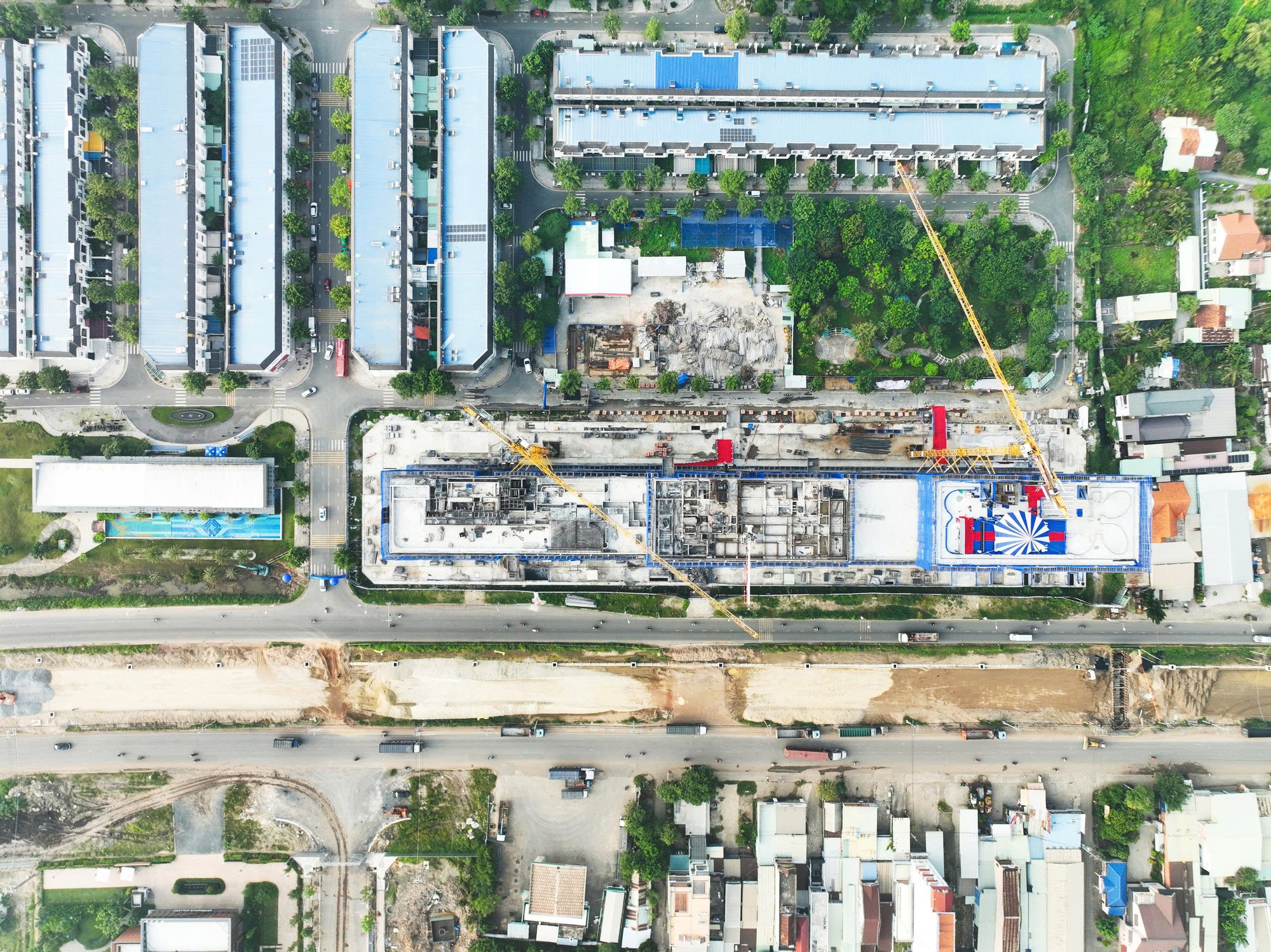
The rapid development of transportation infrastructure has transformed Nhơn Trạch from a sparsely populated area to a region attracting investors’ interest. Real estate businesses that have been present in the region since its early days, such as Thang Long Real Group (TLRG), are now reaping the benefits of this infrastructure development.
TLRG has accompanied Nhơn Trạch since the early 2010s, marking a journey of sustainable development. From the Sunflower City project (2013) to Thang Long Home – Phước An (2015), which has a 95% occupancy rate and has seen a threefold increase in property values, to the more recent Thang Long Home – Hiệp Phước project, which targets CEOs and foreign experts and currently has a 65% occupancy rate, TLRG has continuously raised the bar for local living standards.
The company’s latest project, FIATO Airport City, marks its transition from low-rise to high-rise developments. In August 2025 alone, the project witnessed the topping out of the Galaxy block and the groundbreaking of the Fiesta block – one of six key projects chosen by Đồng Nai province to inaugurate during the Grand Celebration of the 80th National Day, showcasing TLRG’s progress in terms of scale and capabilities.
Thanks to the improved infrastructure, the real estate market in Đồng Nai remains attractive even though it is not on the list of areas to be merged with Ho Chi Minh City. In a recent workshop, Mr. Huỳnh Tấn Lộc, Deputy Director of the Đồng Nai Department of Construction, shared that the province aims to develop Đồng Nai into a new generation of eco-smart airport cities, forming a “twin city” with the new Ho Chi Minh City.
According to Mr. Lộc, Đồng Nai, in general, and Nhơn Trạch, in particular, have the potential for development due to their abundant land resources and convenient connections to the Cái Mép-Thị Vải seaport, expressways, and ring roads. The region is expected to attract significant FDI and create 200,000 to 500,000 jobs in the next ten years. However, he emphasized that the prerequisite for achieving these goals is to capitalize on the advantage of inter-regional transportation connectivity.
The New Housing Development: A Race to the Finish Line for Can Tho’s Social Housing Investors
The Can Tho City Department of Construction has urged six investors to expedite the implementation and progress of their social housing projects in the area. The department’s recent correspondence emphasizes the importance of meeting the targets set by the Prime Minister for the year 2025 and the period between 2026 and 2030.
“Chairman of Cen Group, Nguyen Trung Vu: Vietnam’s Real Estate Market Won’t See an Evergrande or Country Garden Fiasco, But It’s No Place for Amateurs Going Forward”
“At the ‘Real Estate or Real Estate!’ episode of Good Morning HANOIBA, Mr. Nguyen Trung Vu, Chairman of Cen Group, offered candid insights into Vietnam’s real estate landscape. Emphasizing the fundamental differences with China’s market, he asserted that only truly skilled investors will weather the storms.”
Dutch Enterprise Seeks €1 Billion Investment for Industrial Development in Vietnam
The CTP Group, a Dutch conglomerate, is set to invest a substantial 1 billion EUR in Vietnam, with a keen focus on two key regions: Hung Yen and the central region of the country. In Hung Yen, the group aims to develop economic zones and industrial parks, fostering growth and creating a thriving hub of economic activity.
The Vietnamese Economy Over 80 Years: From Founding to the Age of Rising
The Vietnamese economy’s 80-year journey is a testament to the nation’s resilient spirit, innovative vision, and aspiration for advancement. However, new challenges lie ahead, including the middle-income trap, the pressures of green and digital transformation, and the imperative for institutional breakthroughs. These are not merely economic issues but also a historical call to action to propel Vietnam into a developed and prosperous nation by 2045.

